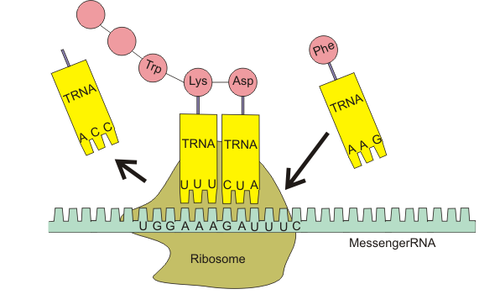Biology: DNA Scientists
5.0(1)
5.0(1)
Card Sorting
1/30
Study Analytics
Name | Mastery | Learn | Test | Matching | Spaced |
|---|
No study sessions yet.
31 Terms
1
New cards
Which scientist conducted tests on extracts made of bacteria to show that the genetic material in bacteria is DNA?
Oswald Avery
2
New cards
Who was responsible for the experiment depicted by the image/data table?
Frederick Griffith
3
New cards
If Chargaff found that a sample of DNA has 30% THYMINE, how much GUANINE would he have calculated to be there?
20%
4
New cards
Who was responsible for the experiment depicted by the image?
Rosalind Franklin
5
New cards
What did Erwin Chargaff conclude from his experiments?
A and T, C and G always occur in equal amounts
6
New cards
Rosalind Franklin's "Photo 51" allowed Watson and Crick to determine the ___ of DNA.
Shape
7
New cards
From his work with mice and pneumonia-causing bacteria, Frederick Griffin coined the term
Transformation
8
New cards
The work of scientists including Griffin, Avery, Hershey & Chase and Franklin helped us to determine the __ are responsible for carrying genetic material.
Nucleic Acids
9
New cards
By using radioactive isotopes, Hershey and Chase were able to conclude that __ is/are the carrier(s) of genetic information.
DNA
10
New cards
Scientist Griffith mixed dead, virulent, pneumonia-causing bacteria with living, harm-less bacteria. The harmless bacteria than infected mice with pneumonia. This experiment showed the process of....
transformation
11
New cards
Who was responsible for the model shown?
Watson and Crick
12
New cards
The work of Erwin Chargaff allowed Watson and Crick to determine the rules of...
nitrogen base pairing
13
New cards
If Chargaff found that a sample of DNA has 20% ADENINE, how much GUANINE would he have determined to be there?
30%
14
New cards
What was Watson and Crick's main scientific accomplishment?
Building the first accurate 3D model of DNA
15
New cards
transcription
the process where the DNA sequence in a gene is copied into mRNA

16
New cards
translation
the process where genetic information coded in mRNA directs the formation of a specific protein at a ribosome

17
New cards
mRNA
type of RNA that carries instructions from DNA in the nucleus to the ribosome

18
New cards
tRNA
type of RNA that carries amino acids to the ribosome

19
New cards
codon
sequence of three bases on a strand of mRNA that provides genetic code information for a particular amino acid

20
New cards
complementary base pairing
In DNA, T pairs with A; G pairs with C;
RNA, U pairs with A and G pairs with C
RNA, U pairs with A and G pairs with C

21
New cards
ribosome
Organelles at which proteins are synthesized. Made of rRNA
22
New cards
nucleus
A part of the cell containing DNA. DNA can not leave.
23
New cards
amino acid
Building block of protein. There are 20 types.
24
New cards
adenine
pairs with uracil in RNA, thymine in DNA
25
New cards
cytosine
pairs with guanine
26
New cards
nitrogenous bases
adenine, guanine, cytosine, thymine, uracail
27
New cards
deoxyribose
sugar in DNA
28
New cards
ribose
sugar in RNA
29
New cards
nucleotide
consists of a phosphate group, sugar, and nitrogen base
30
New cards
DNA
A double-stranded, helical nucleic acid molecule capable of replicating and determining the inherited structure of a cell's proteins.
31
New cards
RNA
A nucleic acid that carries information from DNA to ribosomes